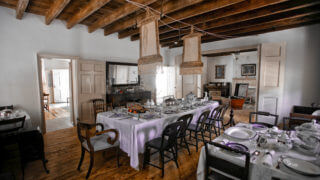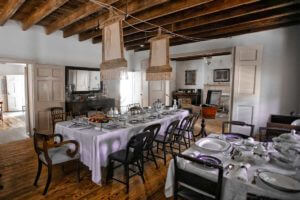 Travel back in time as you tour our rooms and learn about the intrepid, sophisticated women who owned the property and operated it as an exclusive inn. The unique house museum is a dynamic learning project. As historical research, archaeological exploration and advanced structural analysis continue, it continues to provide new information about St. Augustine’s first tourism boom.
Travel back in time as you tour our rooms and learn about the intrepid, sophisticated women who owned the property and operated it as an exclusive inn. The unique house museum is a dynamic learning project. As historical research, archaeological exploration and advanced structural analysis continue, it continues to provide new information about St. Augustine’s first tourism boom.
Constructed from coquina stone, the two-story main house was originally the residence and office of local merchant Andres Ximenez. The first floor contained a storefront and the second floor served as the family quarters. The plot dates back to the original town plan of 1572. The main house and detached kitchen, the only room of this type still present in the city, were built in 1798. After his death, Ximenez’s heirs sold the home to Margaret Cook who converted the home into a boarding house. Several additions were made in later years to increase the number of rooms. As an upscale inn, it hosted individuals, families and politicians as well as sea captains, soldiers and adventurers.
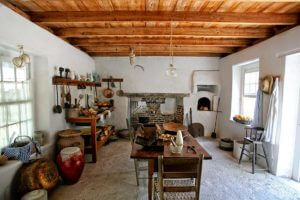 After Florida became part of the United States, St. Augustine became a tourist destination and a setting where doctors recommended that individuals with certain respiratory ailments could seek relief. There was also a large military presence as the U.S. occupied the Castillo de San Marcos. There was a need for additional hotel space. While small-scale boarding houses were typical because families would rent out single rooms, the Ximenez-Fatio House was one of the largest boarding houses in the city. Operated by a succession of women, the boarding house was a highly regarded place to stay in St. Augustine. During this period, it was rare for women to own or operate a business on their own. The last owner of the boarding house was Louisa Fatio.
After Florida became part of the United States, St. Augustine became a tourist destination and a setting where doctors recommended that individuals with certain respiratory ailments could seek relief. There was also a large military presence as the U.S. occupied the Castillo de San Marcos. There was a need for additional hotel space. While small-scale boarding houses were typical because families would rent out single rooms, the Ximenez-Fatio House was one of the largest boarding houses in the city. Operated by a succession of women, the boarding house was a highly regarded place to stay in St. Augustine. During this period, it was rare for women to own or operate a business on their own. The last owner of the boarding house was Louisa Fatio.
The National Society of Colonial Dames purchased the building from Fatio’s heirs in 1939. The Society collaborated with the National Park Service and the State of Florida to restore and preserve the property. The University of Florida has conducted several archaeological digs at the site. The Ximenez-Fatio House is a rare example of early colonial Florida and the role of women in St. Augustine’s commercial history. Based on continued research and archaeological exploration, the story of this remarkable historic site continues to unfold.
Every Room Has a Story
Related Articles
Posted on March 22, 2018
As far back as the early 1800s, the frontier Florida town of St. Augustine attracted tourists. Who were these travelers, and where did they stay many years before the advent of grand Flagler-era hotels?
More Info
Posted on March 22, 2018
The historic Ximenez-Fatio house, built in 1798, sits on America’s first platted thoroughfare, completed in 1572 under the auspices of King Philip II of Spain and was in use 35 years before the Jamestown colony was founded in Virginia.
More Info

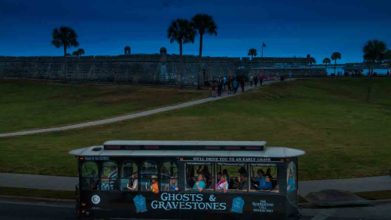
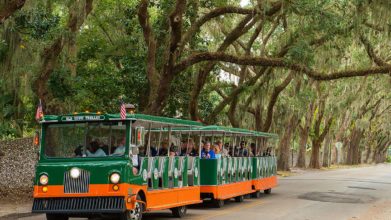


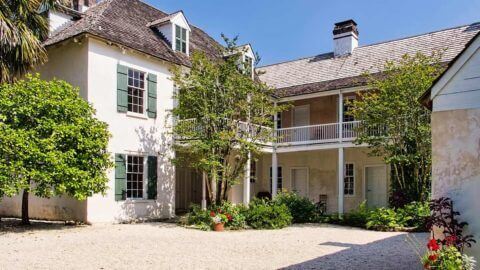
 Travel back in time as you tour our rooms and learn about the intrepid, sophisticated women who owned the property and operated it as an exclusive inn. The unique house museum is a dynamic learning project. As historical research, archaeological exploration and advanced structural analysis continue, it continues to provide new information about St. Augustine’s first tourism boom.
Travel back in time as you tour our rooms and learn about the intrepid, sophisticated women who owned the property and operated it as an exclusive inn. The unique house museum is a dynamic learning project. As historical research, archaeological exploration and advanced structural analysis continue, it continues to provide new information about St. Augustine’s first tourism boom.
